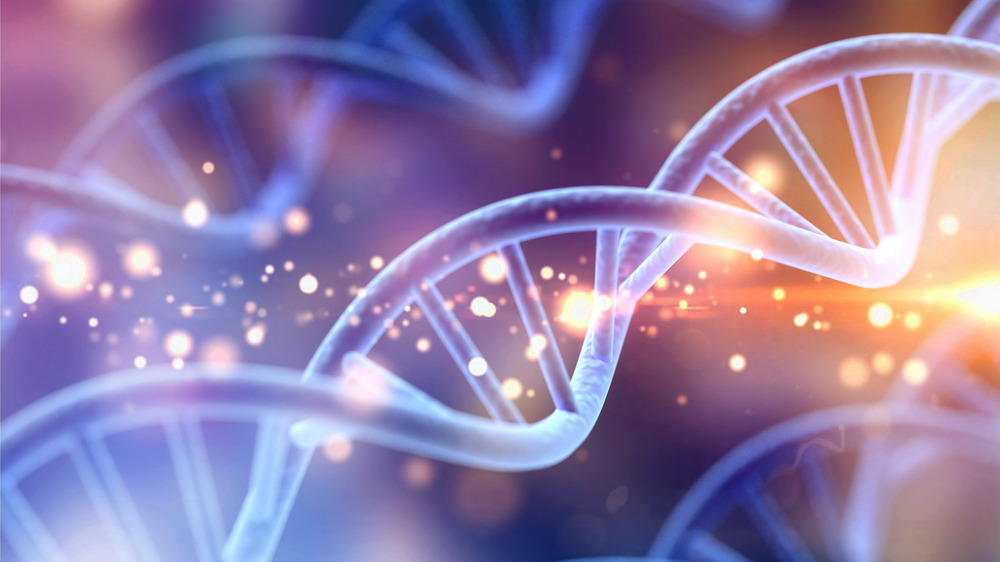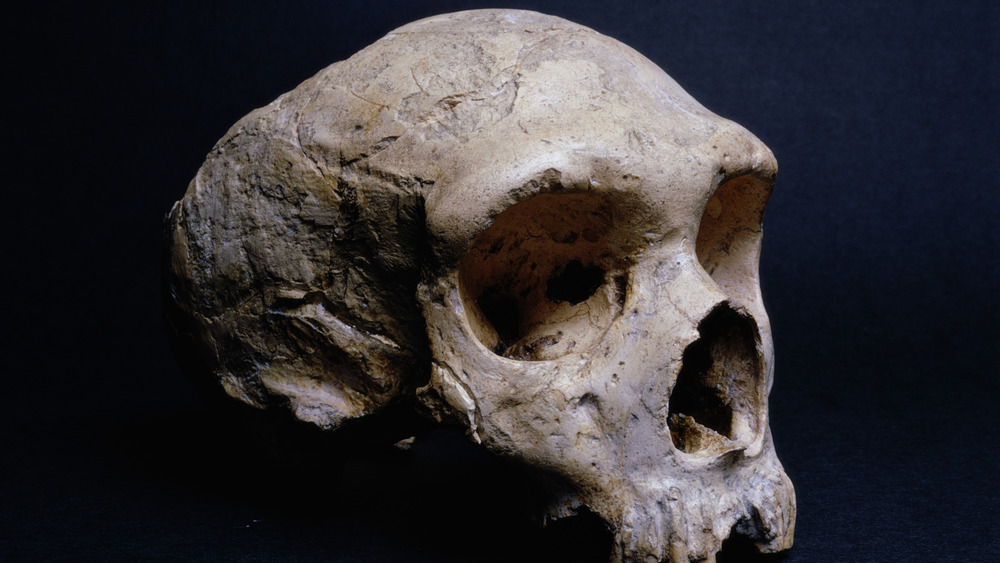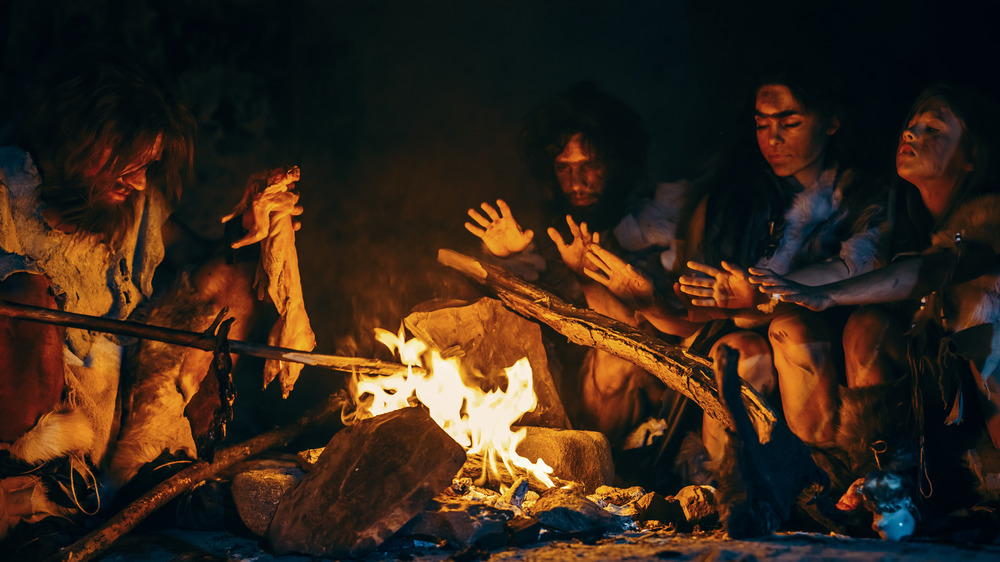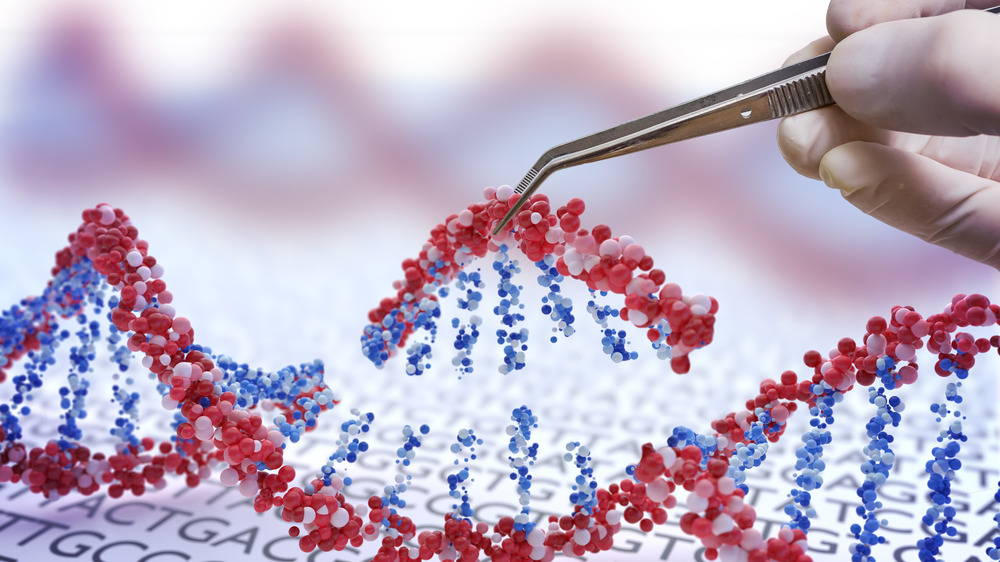Here Are The Neanderthal Traits You Could Be Carrying
Neanderthals, Homo neanderthalensis, is one of modern humans' closest prehistoric relatives. While Homo sapiens were evolving in Africa, these cousins of ours were spreading across Europe and parts of Asia. For the longest time, it was believed that we killed off Neanderthals since, as The Guardian points out, they seem to have disappeared shortly after we traveled out of Africa. The takeover was thought to be a gradual one. All the evidence suggested we were smarter, with more advanced weapons and hunting techniques and language, a mix that would spell disaster to our rivals. Newer discoveries, however, have contested what we previously believed.
The chances of Sapiens decimating the Neanderthal population are still pretty high, but we certainly didn't wage war against our cousins. Let's be honest: most of us would lose that fisticuffs match horribly. Instead, it's likely that we out-competed Neanderthals for necessary resources. That said, we didn't let them all die out before, shall we say, socializing. Thanks to a 2010 genetic study at the University of California, we now know that Neanderthals and modern humans interbred. In fact, according to National Geographic, all people who aren't purely of African descent have a Neanderthal or two in the family tree, donating to us a minimum 1 to 4 percent of our DNA, with the possibility of much more.
What does that mean for us? It turns out, it could mean quite a lot.
What Neanderthals were like
Many modern humans hate winter for a reason: We aren't adapted to the cold. Some peoples have made their homes in freezing climates, but as a species, we didn't evolve for it. Neanderthals, on the other hand, were cold-weather humans who through evolution adapted to some of the harshest climates the Ice Age Earth presented. This in turn made them look a bit different from us. Honestly, if you were standing right next to a Neanderthal, you probably wouldn't notice. To you, they'd just look like an oddly proportioned modern human.
Meet great-grandpappy Ned the Neanderthal. Ned is short. He stands about 5' 2", but that's not bad for a Neanderthal. The tallest were only around 5' 5" or so. Ned's stubby legs and short arms don't help with his height, but, as The Natural History Museum, London, points out, they do help prevent frostbite and hypothermia.
After his height, one of the first things you might notice about Ned is that he's ripped. Neanderthals were thick and muscular, like tiny circus strongmen, which helped with ambush hunting great beasts like the woolly rhino. To our eyes, Ned looks a little goofy, with his giant schnoz, weak chin, protruding brow, and buck teeth, but don't think for a second that Ned is stupid. He can make tools and art with the best of them. He does come from a time before showers, however, so you might want to stay back a few steps.
The traits some modern humans inherited
With a few percent of your DNA coming from our ancient cousins, it's possible that you carry some traits that aren't inherent to Homo sapiens. Many of these traits influence benign physical characteristics, while some of these Neanderthal traits, according to Discover Magazine, could help protect you from certain diseases. Then, there's the unfortunate downside. The universe, as it seems, favors duality, and because it does, inherited Neanderthal genes can also mean inherited detriments.
According to Owlcation, a website that specializes in education with the help of experts on a variety of subjects, some people with blue eyes inherited the trait from Neanderthal ancestors. Modern humans also developed this mutation independently, but both species' DNA sequence for the eye color is currently floating around the gene pool. On the mildly "grosser" side of things, The Scientist points out that certain skin growths, like Seborrheic Keratosis, were passed down to some from our ancient cousins. These types of growths aren't harmful, but they aren't exactly appealing either, especially to those who have a problem with skin tags.
Neanderthals also passed down a gene variant that makes some people resistant to the bacteria that causes stomach ulcers, and some others that cause pale skin or, oddly enough, darker skin in some inheritors. That's about all there are on the good and benign sides of things. It seems a lot of our cousins' DNA wasn't exactly beneficial to modern humans.
On to the bad
To contrast the slight immune benefits some of us may have gotten from Neanderthal gene donors, Neanderthal DNA has doled out some negative prehistoric traits. For example, Owlcation explains that people with certain Neanderthal genes are prone to messed-up circadian cycles. They're night owls, who prefer to sleep when the sun is out and stay up all night, and it's likely linked to an adaptation to the longer winter nights of northern climates, the areas Neanderthals primarily inhabited. It would've been great for the time, but it's hard to function in today's world if you live like a vampire. Most business are only open during the day, and all of your friends crash out when you're just waking up. Of course, things could be worse...
According to New Scientist, certain Neanderthal genes can cause mental health issues in modern humans, including a higher risk for depression and nicotine addiction. Other prehistoric genes can cause a higher risk of heart attack, skin cancers, malnutrition, blood clots, and deep vein thrombosis.
As if being a human in the modern day wasn't hard enough as it is, those of us with Neanderthal DNA might get to deal with a few extra genetic hardships because who knows how long ago, one brand of human appealed to a different brand of human. At least some of us get blue eyes. Though also awkward skin growths, to balance it out, right?



